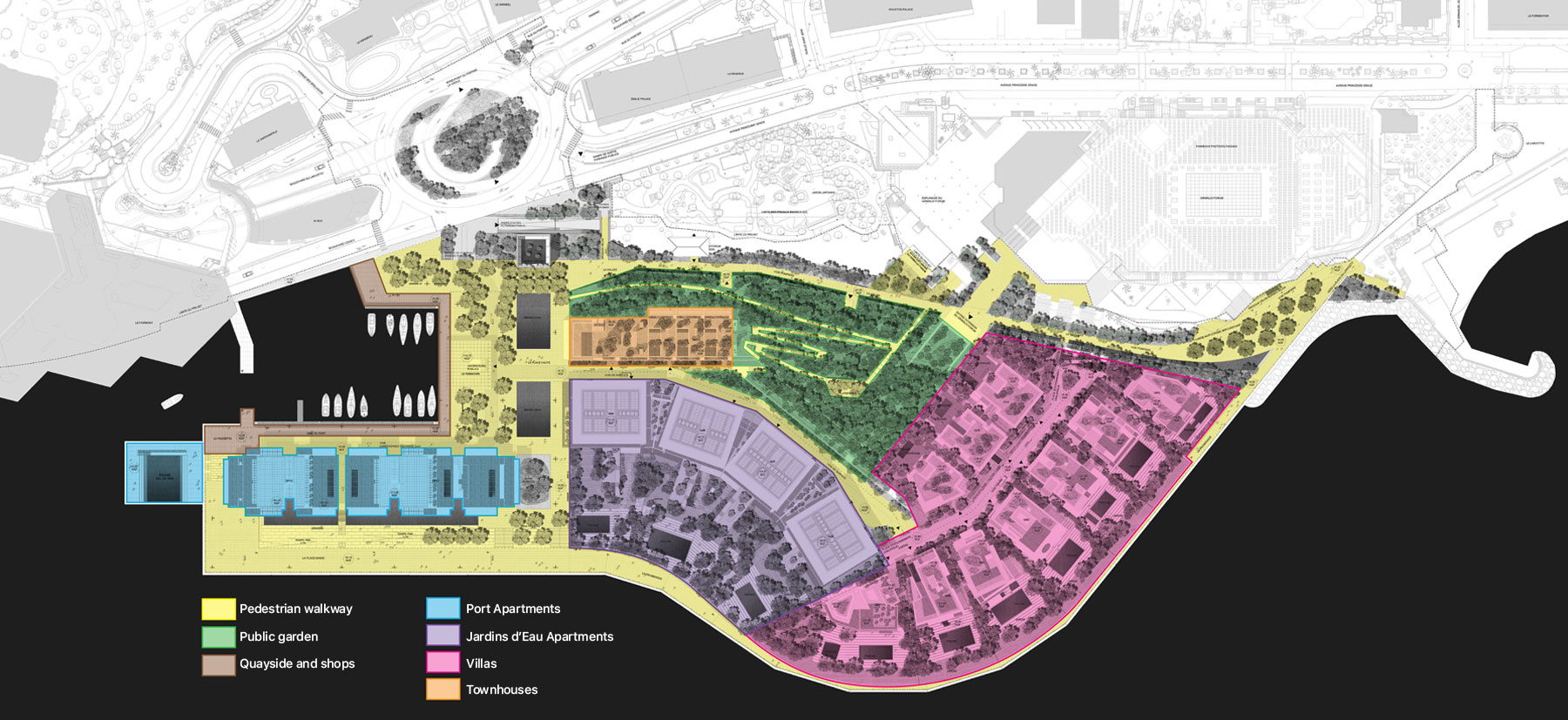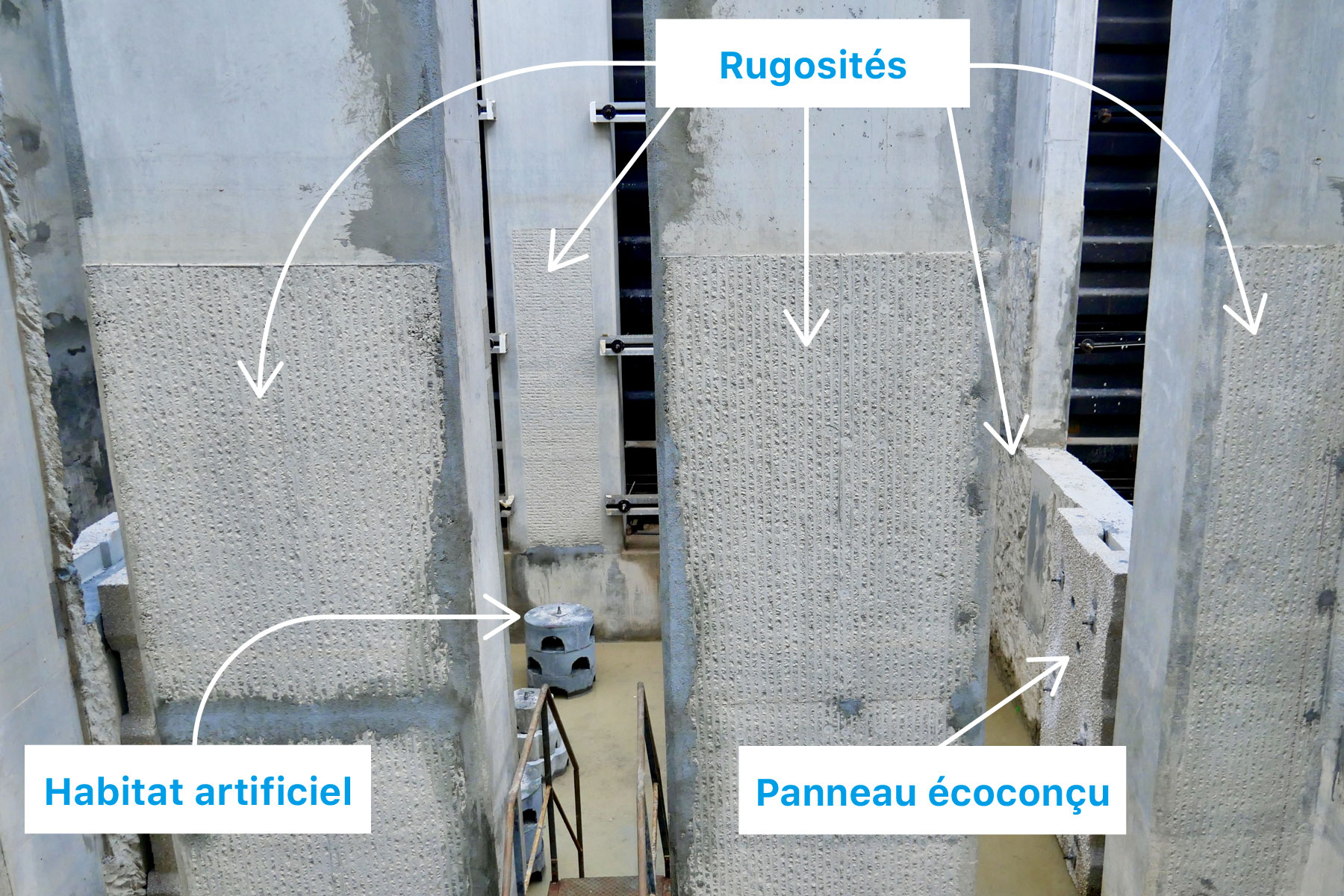Since the launch of the project, this offshore extension has been designed, built and animated in coherence with the natural environment.
Therefore, rather than building on every square metre gained at sea its designers have reintroduced a natural ecosystem into the newly created space.
Concretely, out of the six hectares of new land, one hectare will be dedicated to a wooded park.

Since the start of the project environmental issues have been taken into consideration before beginning each step in the implementation of the project.
Engineers, architects and environmental specialists have thus developed their solutions based on the triptych
“Avoid, Reduce, Compensate”, to:
- limit the impact of preparatory works by adapting operations to environmental conditions (displacement of species and adaptation of the shape of the maritime infrastructure among others),
- reduce this impact during the course of the work (implementation of suitable devices and methods: anti-turbidity screens and acoustic screens)1,
- compensate by attributing ecological functionalities to the designed structures to help restore the ecosystem present prior to the work.
This principle is unprecedented in a construction site of this scale (six hectares) and complexity (construction at sea from -50 metres).
This makes Anse du Portier a laboratory for eco-design. And it also makes it possible to develop sustainable construction solutions that are sometimes unheard of, and that are always adapted to the local environment.
Beyond that, this principle encourages the appropriation of the artificial structures by the natural environment and allows the reintroduction of biodiversity within the urbanisation.
Artificial, submerged structures, shaped to foster development of biodiversity
The caissons of the eco-district’s protective belt have a crucial role.
These structures, which are for the most part submerged, are located between depths of -20 metres and the surface, an area that is very important for marine biodiversity.

They have two functions:
- protecting the eco-district from the power of the swell and the waves,
- integrating devices that can accommodate life.
Hydraulic engineers and environmental engineers have therefore worked together to develop solutions that satisfy both:
- the mechanical criteria essential to contain the effects of the sea on the structure,
- ecological measures to encourage the colonisation of the submerged parts by fauna and flora.
These symbiotic functionalities have been studied, for more than a year in some cases, to measure the durability of the properties of the caissons and simultaneously the real benefits in terms of efficiency for the development of the species. Several features were selected.
At the bottom and on the façade of the caissons:
- superimposed gabions were installed at the base of the caissons in order to start the vertical ecological corridors.

- eco-designed panels were hung on the front side of the caissons. They provide shelter for some species and habitat for others.
In the Jarlan chambers
2:
- Reliefs were added in the lower part of the concrete to allow algae, aquatic plants and molluscs to attach.



- artificial habitat structures of different sizes and shapes were installed.
The variety and repetition of the different arrangements around the caissons and in the Jarlan chambers meet the functional needs of the many species that make up the fauna and flora at these varying depths. These needs differ in terms of habitat, nursery, resting, hunting, shelter and travel conditions between -20 metres and the area around the surface that is constantly being exposed and submerged due to the movement of the sea.
Solène Robic, who heads the team responsible for environmental issues at Bouygues TP, points out that “there is no ‘turnkey’ solution. Many systems only target one species at a time.” She adds: “With the creation of the maritime infrastructure, we cannot limit our work to just one species. Our thinking extends to an ecosystem. Therefore, we have daily R&D work. We are constantly thinking about how to attract biodiversity and develop the attractiveness of the whole area.”
1. Construction work on the maritime infrastructure, which began in 2017, will not be definitively completed until October 2020. The next 10 months will be devoted to preparing the soil (vibrocompaction, levelling, etc.) to accommodate the construction of the future eco-district.
2. These chambers make it possible to limit wave overtopping and the reflection of the energy of the swell and the waves.
 Since the start of the project environmental issues have been taken into consideration before beginning each step in the implementation of the project.
Engineers, architects and environmental specialists have thus developed their solutions based on the triptych “Avoid, Reduce, Compensate”, to:
Since the start of the project environmental issues have been taken into consideration before beginning each step in the implementation of the project.
Engineers, architects and environmental specialists have thus developed their solutions based on the triptych “Avoid, Reduce, Compensate”, to:
 They have two functions:
They have two functions:



